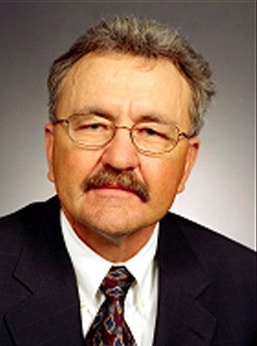No Dust Bowl
Modern practices have kept agricultural crisis from being worse
By Terry Peach, Oklahoma Secretary of Agriculture

During my recent visits to Cimarron County and other parts of the Oklahoma Panhandle, I have been constantly reminded of the great strides made in agricultural practices during the past century. The drought conditions that plague our producers in the Panhandle rival or surpass those of the 1930s in every way but one: no Dust Bowl.
This nation’s soil conservation efforts were born as a response to the Dust Bowl days and today it is easy to see exactly how effective modern conservation practices really are. The lack of moisture has effectively halted any type of vegetative growth (unless the land is irrigated), but the soil is not blowing — at least we aren’t experiencing dust storms of the intensity they saw in the “dirty thirties.”
The conservation practices being used are literally saving the land for the future when the drought is finally broken. Sure, there are some instances of wind erosion on the parched acres of Cimarron County, but the damage has been limited by good conservation practices.
Today our farmers and ranchers fighting to survive this tenacious drought also are struggling with a problem our forbears didn’t face: greatly increased input costs. Fuel, fertilizer and seed grain prices have increased up to four times during the past year. Some of the farmers I spoke with earlier this month in Cimarron County said that even if they had irrigation wells in place, they couldn’t afford the fuel it would take to irrigate their land.
These higher costs of production are challenges faced by all Oklahoma agriculturists — indeed the entire American agricultural industry. Just as our producers were forced to learn and practice good conservation techniques back in the 1930s, we must now learn to do more with less, develop alternative fuels and become even more efficient and sustainable.
We have merely scratched the surface in our research of alternative fuels and energy sources. Ethanol, biodiesel, solar and wind energy are areas we are currently exploring for the future. The future will undoubtedly bring more possibilities for exploration for our energy needs.
The development of seed genetics that require less fertilization and protection from weeds and diseases also is under way. Drought-resistant varieties of grains and other crops are subjects of research and could help reduce our need for irrigation and reduce the costs of production while ensuring food for the world.
Agriculture today faces a crisis just as it did during the Dust Bowl era. I believe programs such as Gov. Brad Henry has initiated to study and promote renewable fuels and our land grant universities’ research capabilities will ultimately prevail and give us the tools we need to overcome this 21st-century challenge.
The future of our state and our nation depends upon our success in these arenas. I know we will meet these challenges with the same results as our predecessors did so many years ago.
